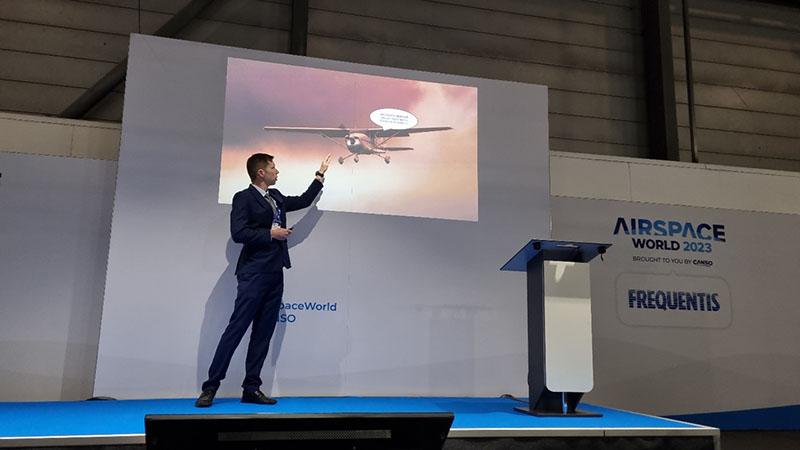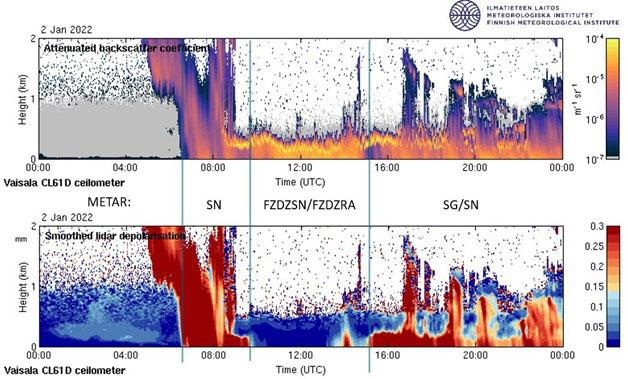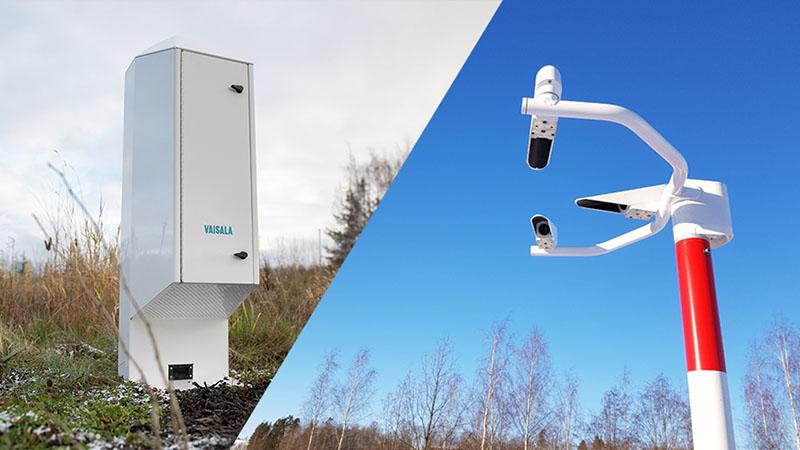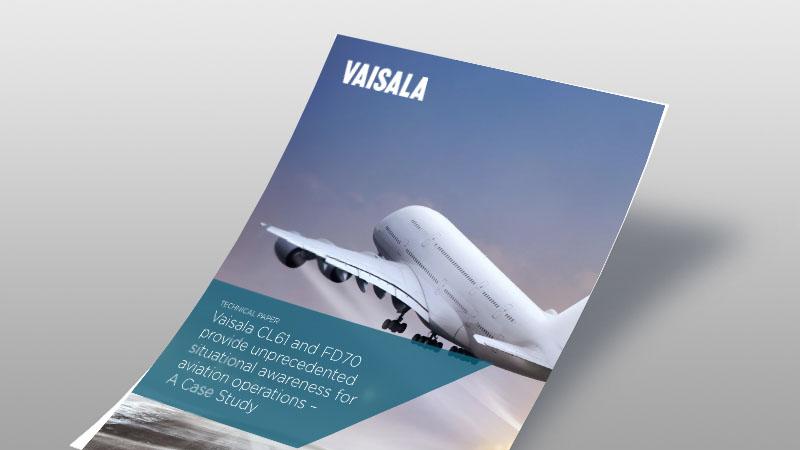From cloud to ground
Combining next-gen ceilometer and present weather sensors for unprecedented aviation weather detection.
A few weeks ago, Vaisala’s aviation team were proud to be present at the inaugural Airspace World in Geneva, Switzerland. Organized by CANSO, Airspace World is one of the largest airspace and near-space management events in the world, bringing together ANSPs, suppliers, ATM professionals, innovators and new technology owners. Held over three days, this year's show attracted over 5000 attendees and 117 exhibitors, with key themes including delivering technologies for a safer world, delivering future operations, delivering an integrated airspace for the future, and delivering a sustainable future.
During the conference, Juha Pikkarainen, Application Manager for present weather and visibility sensors presented Vaisala’s recent technical paper on how the Vaisala FD70 and CL61 can be used to enhance airport safety during freezing conditions. In this blog he tells us a bit more about this exciting development in airport weather technology.

Juha Pikkarainen at Airspace World in Geneva explaining the importance of accurate detection of freezing conditions, especially for smaller aircraft.
Awareness of freezing conditions is crucial in aviation. The presence of ice on an aircraft's wings, tail, and other surfaces can severely affect its performance and safety. Ice buildup can cause the plane to lose lift, increase drag, and alter its control surfaces, making it difficult for pilots to maneuver and potentially leading to a dangerous situation. In severe cases, ice accumulation can even cause an aircraft to stall or crash. Therefore, pilots must stay informed about weather conditions and act appropriately to de-ice their aircraft before takeoff.
Additionally, ground crew members must ensure that the runway and taxiways are clear of ice and snow to prevent accidents during landing and takeoff, while maintenance staff need to remove snow and ice from walkways and other public areas to ensure the safety of personnel and passengers. Overall, awareness of freezing conditions is a critical aspect of aviation safety that cannot be overlooked. To prevent accidents, airlines and aviation professionals rely on accurate weather forecasting and monitoring systems to detect and respond to changes in weather conditions.
The perfect combination
Vaisala has recently developed two sensors that have revolutionized the weather sensing technology for aviation. These sensors, the Vaisala Forward Scatter Sensor FD70 and the Vaisala Ceilometer CL61 with Depolarization, allow unprecedented sensing of both surface-based weather phenomena as well as aloft.
The FD70 measures visibility and present weather and includes an accurate separate temperature and humidity sensor. It can be used as an accurate rain gauge to measure the amount of rain, and as ground truth data for weather radars. It measures the droplet size distribution and the falling speed of droplets from the sky and can replace many separate individual sensors as a single system. The FD70 has a high sampling rate of 5 megahertz, enabling it to see every single droplet from the sky, and it also has high sensitivity, allowing it to detect very small particles.
The ceilometer is traditionally used for cloud cover, height detection, and sky condition measurement. The CL61 differentiates between solid and liquid water particles, enabling it to detect icing conditions, and it can also effectively detect volcanic ash from the sky. The CL61 provides similar cloud cover detection to the Vaisala CL31 but with the added feature of identifying icing conditions.
Winter-time testing
During a case study at Helsinki-Vantaa Airport, Finland's main airport, traditional backscatter data from the sky and precipitation data were compared to data from the CL61 and FD70. The FD70's high sensitivity and sampling rate enabled it to detect small particles, and the CL61 could identify supercooled liquid layer that caused freezing rain. Overall, the instruments' data helped to improve the identification of icing conditions and provided more accurate and detailed information for pilots and aviation officials.

Comparison of CL61 attenuated backscatter coefficient and smoothed lidar depolarization with observer-generated METAR precipitation types from 2 Jan 2022.
In summary, this case study demonstrates the capabilities of the new Vaisala Ceilometer CL61 with Depolarization to improve the situational awareness for operational use at airports. The CL61 provides detailed information about what is happening aloft, and the Forward Scatter Sensor FD70 provides confirmation of exactly what is reaching the ground and moreover what is the intensity of the event.
The CL61+FD70 combination provides unprecedented awareness of high-impact freezing conditions affecting aviation operations. This data is meant for on duty meteorologists to enable them to make critical decisions and more accurate forecasts of the conditions to improve the safety of airfield operations both on the ground and aloft.
Read the full Technical Paper here.

